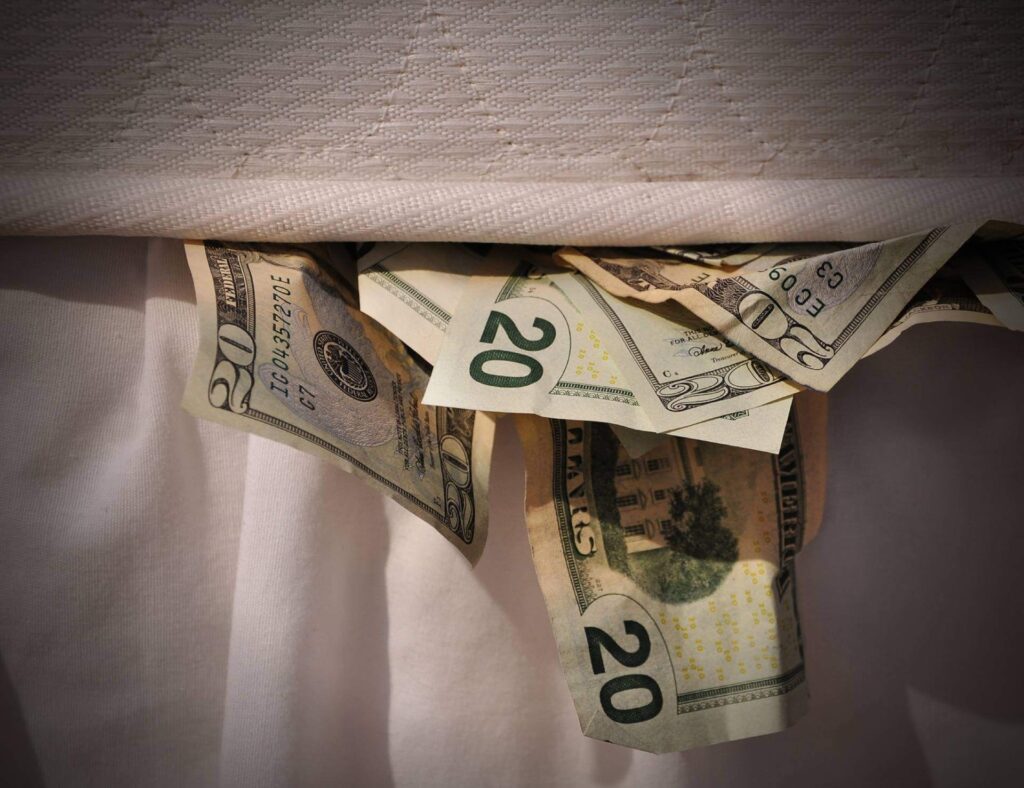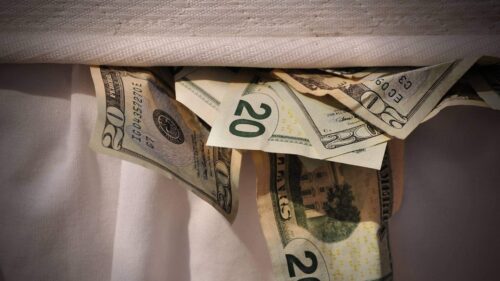Not a day goes by without someone penning an article about the looming dangers posed by central bank digital currency (CBDC). If you need a primer on CBDC, check out my piece on money creation for Fair Observer. This short YouTube video by The Wall Street Journal is also a good place to start:
Let’s take a look at the CBDC critic’s arguments.
“The government wants to control what I spend.”
This claim seems to stem from the potential programmability of CBDC. There are some very limited use cases where this could be possible. In some of these, frankly, it would even be desirable.
Take, for example, the US food stamps program, or SNAP (Supplemental Nutrition Assistance Program). In 2023, about 42 million Americans received financial aid for the purchase of select food items at a cost of $120 billon. To avoid the stigma associated with actual “stamps,” the program often comes in the form of a pre-loaded debit card, or Electronic Benefits Transfer (ETB). Alcohol and tobacco products cannot be purchased with ETC. Imagine the public outcry if US taxpayers were to finance alcohol and tobacco addictions!
Today, governments already control spending; I was unable to buy a t-shirt from the Wikileaks store with my US credit card. In 2022, a Canadian judge froze access to donations for striking truckers. Yet, no CBDC was necessary to enable government control.
One could ask why the government would wait for CBDC to control our spending when it is perfectly able to do so already now.
“The government can make my money go away with a click.”
It might not be a bad thing to be able to create money with an expiration date.
US stimulus checks during COVID were meant to cushion a drop in economic activity. However, rather than spending the additional income, many recipients chose to increase their savings instead. The personal savings ratio jumped from 7 to 32% — the highest level since at least 1960. Consumers reduced their credit card balances by $150 billion.
A reduction in debt does not help boost consumption. It would therefore make sense to require any stimulus checks to be spent within a certain time frame to increase the efficacy of such programs. A programmable CBDC would help achieve this aim. Those “free” CBDC dollars would come with an expiration, just like many gift cards, airline miles or even public transportation tickets. To suggest that this is driven by nefarious intentions is missing the point.
Additionally, stimulus payments could be limited to those with a high propensity to spend — lower-income households. The US CARES Act reduced stimulus payments for those with incomes above a certain threshold. A CBDC could make administration of such limitations less cumbersome.
One area of real concern, however, is the potential for negative interest rates. To combat the threat of deflation, the European Central Bank (ECB) lowered its deposit rate into negative territory from 2014 until 2022. Some commercial banks began charging large deposits negative interest. However, this applied only to bank deposits. Negative interest rates cannot be applied to physical cash. With CBDC, central banks could impose negative interest on currency, too. (From the viewpoint of a central bank, the ability to pass on negative interest rates is an advantage.) It should be pointed out, however, that prolonged deflation is a rare occurrence. This is especially true for fiat monetary systems, which have an inflationary bias by design.
“CBDC is not real money.”
According to the US Code, “US coins and currency (including Federal reserve notes … ) are legal tender for all debts, public charges, taxes, and dues.”
Critics claim that CBDC cannot be legal tender since it is not mentioned in US code. According to this logic, even bank deposits are not “real money,” and wiring monthly payments would not repudiate your obligation towards the mortgage company (unless the company agrees to accept such payments). But why would anyone insist on payment in legal tender only? What would be the purpose? How cumbersome would it be to deliver coins and banknotes, in person or via courier, and then to prove that delivery has successfully occurred?
The relevant section of the US Code was established in 1965. Lawmakers could not have anticipated improvements in payment systems in the following 50 years.
Besides, even if the current statute did exclude CBDC, it would take a simple act of Congress to change it.
As of early 2024, however, there are several noteworthy efforts in the Congress and state legislatures aimed at limiting or preventing the introduction of CBDC. These efforts primarily focus on restricting the Federal Reserve’s ability to develop or issue one.
Republican Senator Ted Cruz, member of the Senate Committee on Commerce, Science, and Transportation, introduced one such bill. This legislation seeks to prohibit the Federal Reserve from developing a direct-to-consumer CBDC, which could, allegedly, be used as a financial surveillance tool by the federal government.
Similarly, Senator Mike Lee, also a Republican, reintroduced legislation aimed at preventing the Federal Reserve from reshaping the US financial sector with the implementation of a CBDC.
In Texas, a Senate Concurrent Resolution expressed opposition to CBDC. In Florida, Governor Ron DeSantis signed a bill prohibiting the use of CBDC in the state, claiming, amusingly, that CBDC would “threaten FinTech innovation.”
Similar legislative efforts are underway in states like Louisiana, Alabama and North Dakota. These bills largely focus on concerns about privacy and government surveillance, as well as the potential for increased control over financial transactions and individual freedoms. The topic of CBDC has become increasingly partisan, with most of the opposition coming from Republican lawmakers. However, no bills other than Florida’s have advanced as significantly in the legislative process.
Advantages of CBDC
CBDC has various advantages over the use of cash, as John Kiff, a former senior financial expert for the International Monetary Fund (IMF), describes. Cash needs to be printed at significant cost due to security requirements. It also requires regular distribution to bank branches and ATMs. Consumers must obtain cash, often paying a withdrawal fee. Cash must be carried in sufficient quantity for payment at points of sale. Businesses need to be equipped with registers, constantly having to restock change while depositing larger bills into vaults. Commercial banks need to sort out damaged banknotes and send them back to the central bank for destruction. At all those stages, physical money needs to be counted.
In many countries, banking customers face significant monthly service fees. Meanwhile, CBDC could be held in a digital wallet, provided by an app for mobile phones, and provided free-of-charge.
CBDC is more than just more efficient. As time goes on, it will become indispensable.
What if you were told that you would never be able to withdraw the money in your bank account? In aggregate, this is true. US deposits at all commercial banks amount to around $17 trillion. There are around $2.3 trillion in currency in circulation, of which an estimated 70% is held abroad, leaving less than $700 billion for domestic purposes. The amount of deposits exceeds the amount of “cash” by a factor of 25.
Related Reading
Intuitively, we understand the bank does not have all our money in “cash” in its vault. We rely on the assumption not every customer would want to withdraw all the money at once. And that we could, up to certain daily limits, withdraw cash at our pleasure.
You, as a customer, have become an unsecured creditor of a private institution. In other words, from the bank’s perspective, customer deposits are liabilities. When you make a withdrawal, you exchange that unsecured claim against a private institution into a claim against the central bank. Private institutions can go bankrupt; the central bank cannot.
This option of a 1-for-1 exchange into public money is what keeps our entire private monetary system functioning. More than $300 trillion in global monetary claims outstanding are supported by less than $30 trillion in major central bank assets. Thus, 90% of money outstanding is of private origin, consisting in deposits credited by commercial banks to customers, rather than public money like cash or central bank deposits.
Since individual citizens cannot open accounts at the central bank, withdrawing cash is currently their only way to access public money. As the use of cash continues to decline, citizens lose that access. People in a cashless society would not be able to convert any private money into public money. Your bank deposits will remain in the private banking system forever. The “peg” with risk-free public money is gone.
This is an important reason why central banks need to issue digital versions of public money. Money should be a public good. CBDC is necessary to keep it that way.
[Alex Gloy is a member of Digital Currency Think Tank.]
[Anton Schauble edited this piece.]
The views expressed in this article are the author’s own and do not necessarily reflect Fair Observer’s editorial policy.
Support Fair Observer
We rely on your support for our independence, diversity and quality.
For more than 10 years, Fair Observer has been free, fair and independent. No billionaire owns us, no advertisers control us. We are a reader-supported nonprofit. Unlike many other publications, we keep our content free for readers regardless of where they live or whether they can afford to pay. We have no paywalls and no ads.
In the post-truth era of fake news, echo chambers and filter bubbles, we publish a plurality of perspectives from around the world. Anyone can publish with us, but everyone goes through a rigorous editorial process. So, you get fact-checked, well-reasoned content instead of noise.
We publish 2,500+ voices from 90+ countries. We also conduct education and training programs
on subjects ranging from digital media and journalism to writing and critical thinking. This
doesn’t come cheap. Servers, editors, trainers and web developers cost
money.
Please consider supporting us on a regular basis as a recurring donor or a
sustaining member.
Will you support FO’s journalism?
We rely on your support for our independence, diversity and quality.











Comment